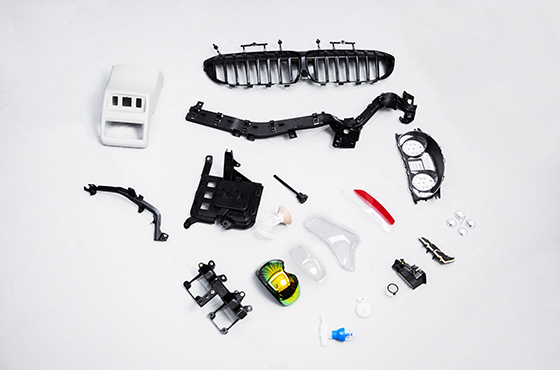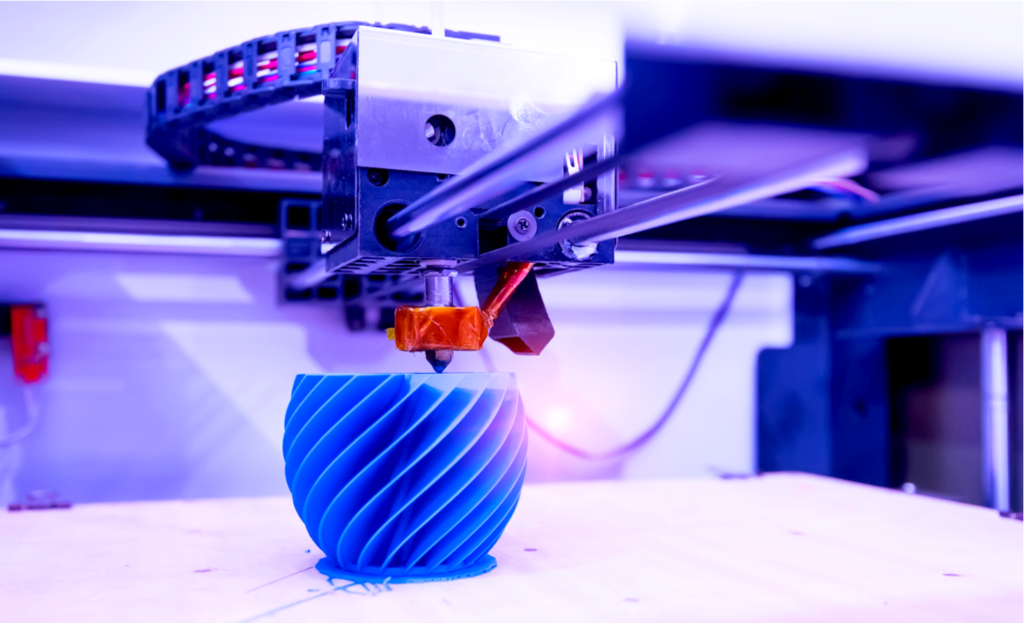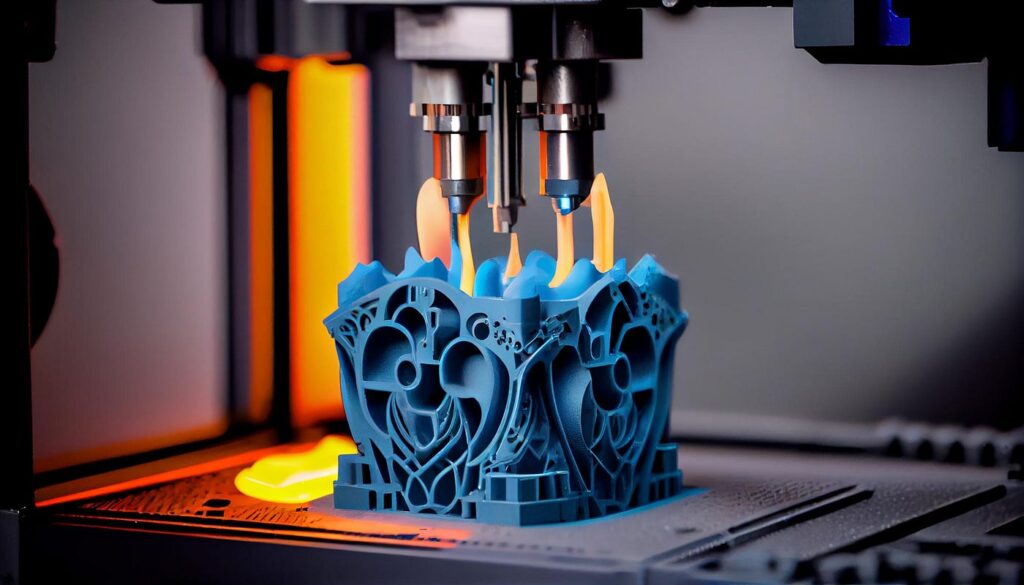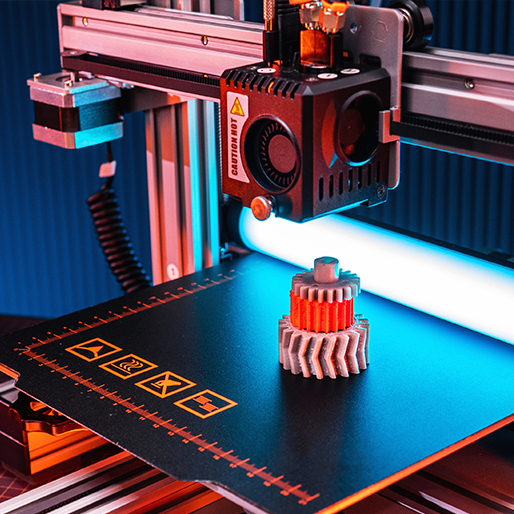Introduction
Innovation is critical to staying ahead of the curve in the fast-paced manufacturing world. Two groundbreaking processes, injection molding and 3D Printing, have revolutionized the industry with their versatility and efficiency. Join us as we explore the vital role that injection molding and 3D printing play in modern manufacturing and discover which one aligns best with your unique needs and objectives.
Understanding the Basics
Injection Molding
Injection molding is a sophisticated manufacturing technique that injects molten material into a precisely designed mold cavity. Once injected, the material cools and solidifies, taking on the shape of the mold. This process is favored for producing large quantities of identical parts with remarkable precision and efficiency.
3D Printing
On the other hand, 3D Printing, also known as additive manufacturing, operates by layering material to construct objects based on digital 3D models. This revolutionary process offers unparalleled design flexibility, enabling easy creation of intricate geometries and customized components.
Differences in Flexibility: Injection Molding vs. 3D Printing
Injection Molding:
Injection molding, while highly efficient, is typically best suited for producing parts with relatively simple geometries. The process involves injecting molten material into a pre-designed mold, which can sometimes limit the complexity of shapes that can be achieved. However, what it lacks in complexity, it compensates for in excellent reproducibility, making it ideal for manufacturing standardized parts in large quantities.


3D Printing:
Conversely, 3D Printing offers unparalleled design flexibility, allowing for the creation of intricate shapes and structures that may be challenging or impossible to achieve through traditional manufacturing methods like injection molding. With 3D Printing, layer-by-layer construction enables the production of highly customized and complex parts, making it an ideal choice for prototyping and creating unique, one-of-a-kind components.
Comparative Analysis:
To illustrate the differences in flexibility between injection molding and 3D Printing, let’s consider an example from the automotive industry. Suppose a car manufacturer must produce a custom dashboard component with intricate curves and details. While injection molding can efficiently mass-produce simpler dashboard components, it may need help replicating the complexity required for the custom part. In contrast, 3D Printing excels in this scenario, effortlessly creating the intricate curves and details of the custom dashboard component with precision and ease.
Advantages of Injection Molding:
Despite the superior design flexibility of 3D Printing, injection molding offers distinct advantages, particularly in mass production. For automotive manufacturers, injection molding’s ability to produce standardized parts in large volumes with high precision and efficiency remains unmatched. Additionally, the cost-effectiveness of injection molding for large-scale production further solidifies its position as a preferred manufacturing method in many industries.
Cost Efficiency and Scalability: Injection Molding vs. 3D Printing
Injection Molding:
Injection molding stands out for its exceptional cost-effectiveness, particularly in large-scale production runs. The process benefits from economies of scale, where the per-unit cost decreases as production volume increases. This makes injection molding an ideal choice for industries requiring high-volume manufacturing of standardized parts, such as automotive and consumer goods.
Suppose a medical device company needs to produce a specialized component for a new prototype. In this case, 3D Printing provides a cost-efficient solution, allowing the company to quickly iterate and produce prototypes without significant tooling or setup costs. This agility in small-batch production and rapid prototyping is a distinct advantage of 3D Printing over injection molding.


3D Printing:
Conversely, while 3D Printing may entail higher upfront costs than injection molding, it offers significant savings for small-batch production and rapid prototyping. One of the primary cost-saving advantages of 3D Printing is the elimination of costly tooling and setup required in traditional manufacturing processes like injection molding. This makes 3D Printing an attractive option for industries that need low-volume manufacturing or rapid prototyping, such as aerospace and medical device manufacturing.
Now, let’s consider an automotive manufacturing plant that needs to produce thousands of identical parts for a new vehicle model. Here, injection molding shines due to its cost-effectiveness in large-scale production. The economies of scale associated with injection molding result in lower per-unit costs, making it the preferred choice for mass-producing standardized automotive components.
Material Selection: Injection Molding vs. 3D Printing
Injection Molding:
Injection molding offers a wide range of materials, including thermoplastics, thermosets, and elastomers. This versatility empowers manufacturers to select materials tailored to meet specific performance requirements. Whether achieving high durability, heat resistance, or flexibility, injection molding provides ample options for diverse manufacturing needs.
Imagine an electronics manufacturer requiring high-temperature resistant components for electronic devices. In this scenario, injection molding offers a wide selection of thermoplastics and thermosets engineered to withstand elevated temperatures without compromising performance. The ability to choose from a diverse range of materials ensures that the manufacturer can meet the stringent requirements of the electronics industry.


3D Printing:
Similarly, 3D Printing provides diverse materials, from plastics and metals to composites and ceramics. Although the material selection in 3D Printing may be relatively narrower than that of injection molding, it continues to evolve rapidly. Advances in 3D printing technology continually introduce new materials with enhanced properties, such as increased strength, durability, and heat resistance. This ongoing evolution expands the application possibilities of 3D Printing across various industries.
Suppose a designer is tasked with creating a lightweight yet durable prototype for an aerospace component. Here, 3D Printing provides a compelling solution by offering advanced composite materials known for their exceptional strength-to-weight ratios. With 3D Printing, the designer can select from innovative materials optimized for aerospace applications, achieving lightweight design and structural integrity.
Speed and Customization: Injection Molding vs. 3D Printing
Injection Molding:
Injection molding is renowned for its speed and efficiency in producing large quantities of parts within a short timeframe. The process’s ability to mass-produce identical components makes it a preferred choice for high-volume manufacturing. However, it’s essential to note that while injection molding offers rapid production speeds, the setup and tooling process can be time-consuming, particularly for intricate or complex molds. Despite this initial setup time, injection molding’s efficiency in producing large batches remains unmatched.
Suppose an automotive manufacturer needs to produce thousands of identical parts for a new vehicle model within a tight deadline. In this scenario, injection molding’s high-speed production capabilities are invaluable. Despite the initial setup time required to prepare the molds, injection molding can efficiently produce large quantities of parts in a fraction of the time compared to traditional manufacturing methods.


3D Printing:
On the other hand, 3D Printing stands out for its customization and on-demand production capabilities. Unlike injection molding, which is optimized for mass production, 3D Printing enables rapid iteration and design changes, making it ideal for creating prototypes and one-off parts without expensive tooling. This flexibility in design iteration allows for quick adjustments and modifications, significantly reducing the time and cost associated with traditional manufacturing processes.
Now, imagine a product designer tasked with developing a customized smartphone case tailored to individual customer preferences. Here, 3D Printing offers unparalleled customization options, allowing the designer to create unique, personalized designs without the constraints of traditional manufacturing processes. With 3D Printing, each smartphone case can be produced on demand, enabling rapid prototyping and quick adjustments based on customer feedback.
Conclusion
In conclusion, injection molding and 3D Printing present distinct advantages and applications within the manufacturing industry. While injection molding excels in high-volume production of standardized parts, 3D Printing offers unparalleled design flexibility, customization, and efficiency in low-volume manufacturing.
As FDX, a specialist in injection molding, we’re dedicated to offering innovative solutions to meet your manufacturing requirements. Whether you need mass-produced components or customized prototypes, our expertise in injection molding ensures efficient and cost-effective production.
Feel free to reach out with any inquiries or assistance regarding injection molding processes. We’re committed to tackling diverse manufacturing challenges and delivering tailored solutions to drive your business growth and success.
